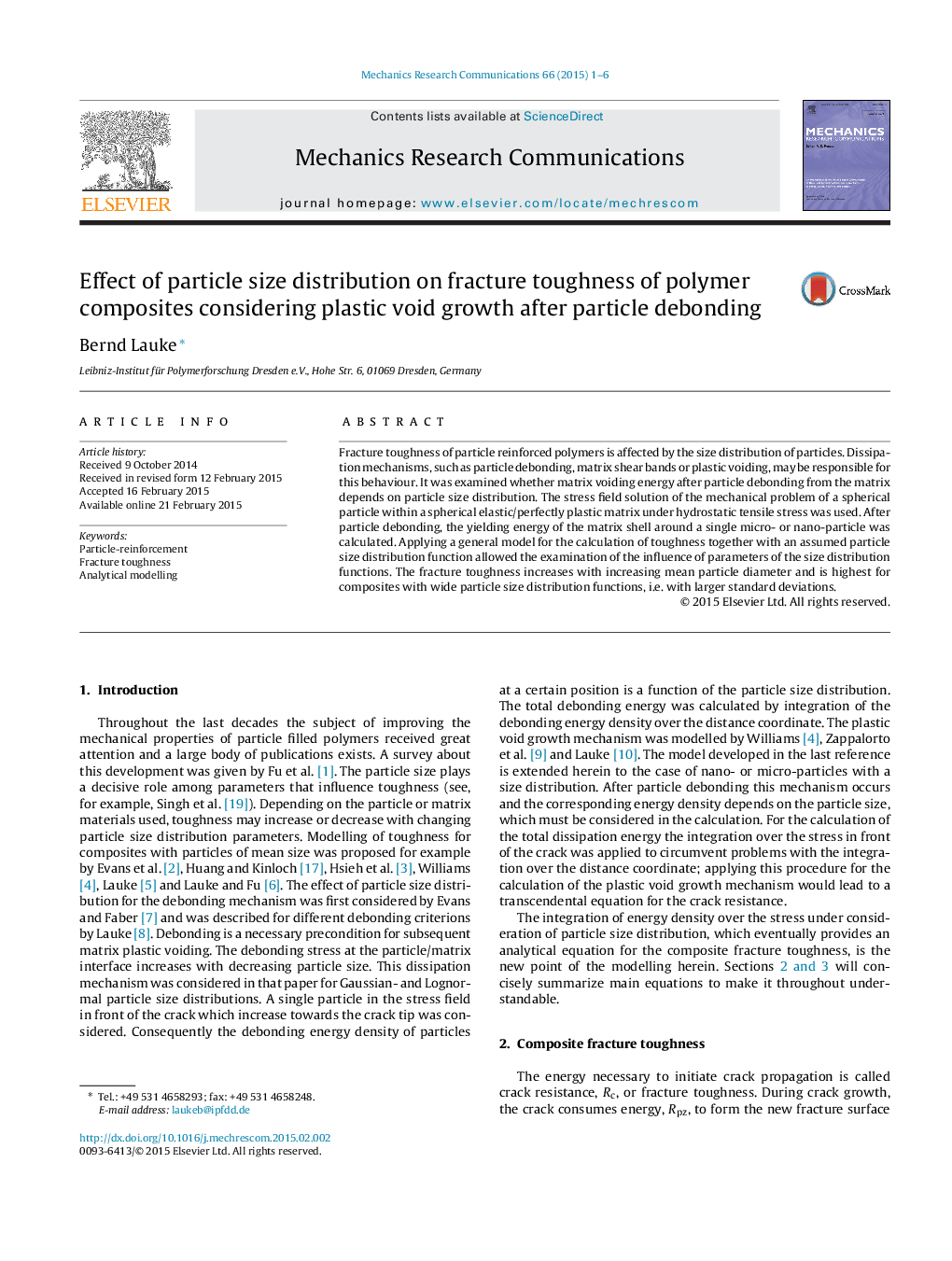| Article ID | Journal | Published Year | Pages | File Type |
|---|---|---|---|---|
| 800793 | Mechanics Research Communications | 2015 | 6 Pages |
•Plastic voiding energy density is calculated for particle size distributions.•Integration of energy density over stress field provides crack resistance.•Particle size distribution effect on energy dissipation by plastic voiding is high.•Fracture toughness increases with increasing mean particle diameter.•Fracture toughness is highest for wide particle size distribution functions.
Fracture toughness of particle reinforced polymers is affected by the size distribution of particles. Dissipation mechanisms, such as particle debonding, matrix shear bands or plastic voiding, may be responsible for this behaviour. It was examined whether matrix voiding energy after particle debonding from the matrix depends on particle size distribution. The stress field solution of the mechanical problem of a spherical particle within a spherical elastic/perfectly plastic matrix under hydrostatic tensile stress was used. After particle debonding, the yielding energy of the matrix shell around a single micro- or nano-particle was calculated. Applying a general model for the calculation of toughness together with an assumed particle size distribution function allowed the examination of the influence of parameters of the size distribution functions. The fracture toughness increases with increasing mean particle diameter and is highest for composites with wide particle size distribution functions, i.e. with larger standard deviations.
